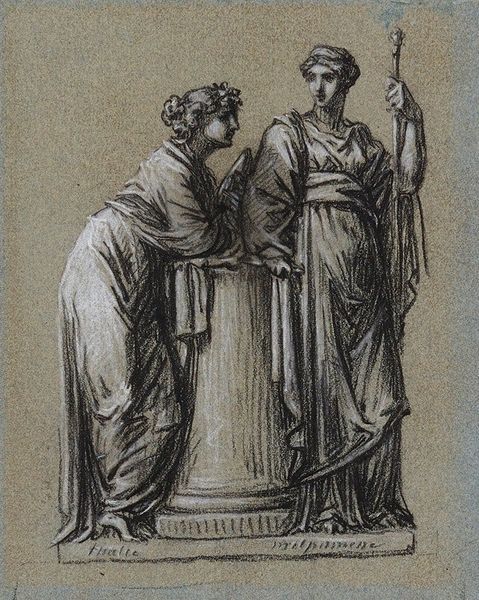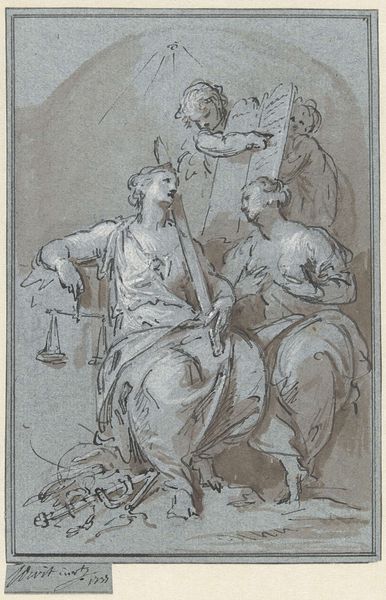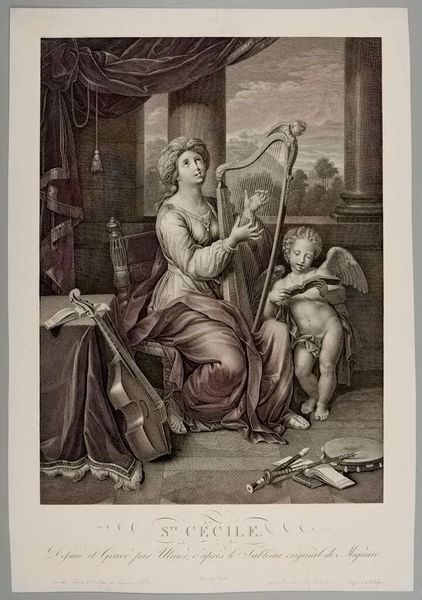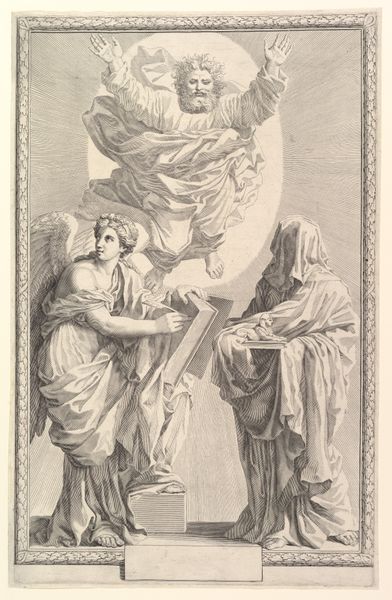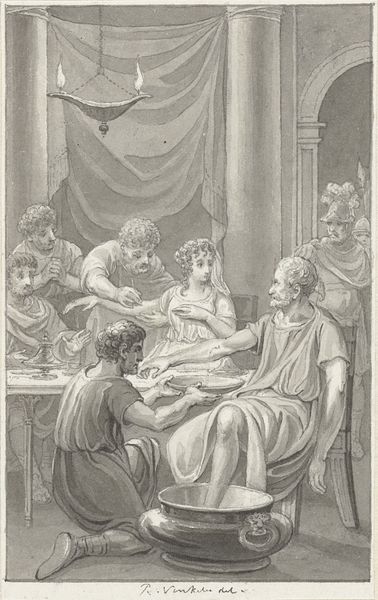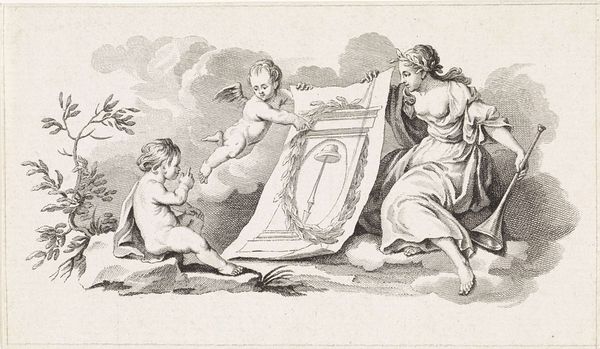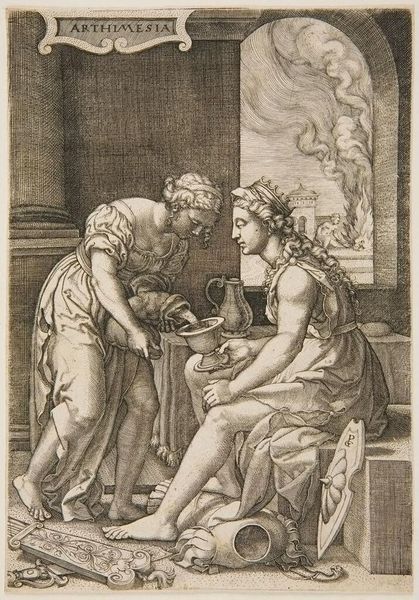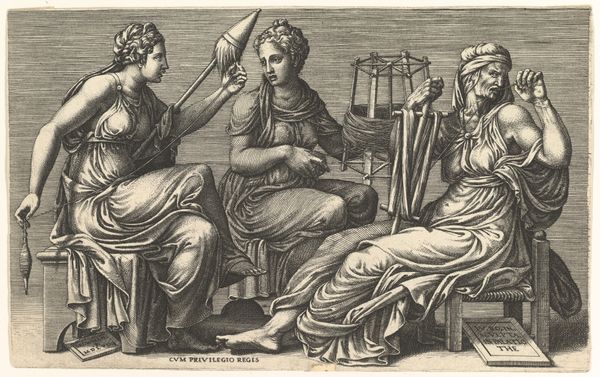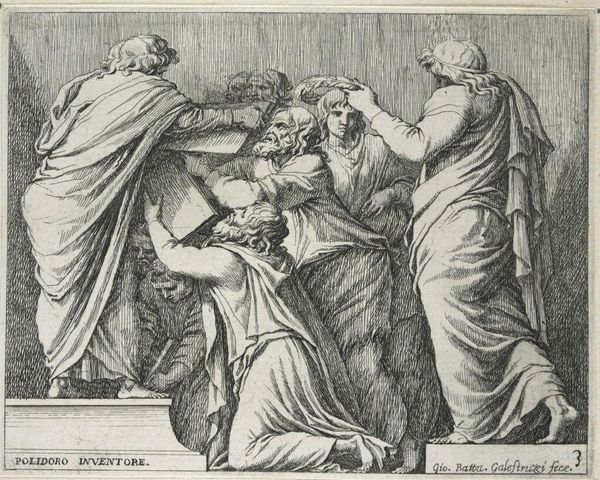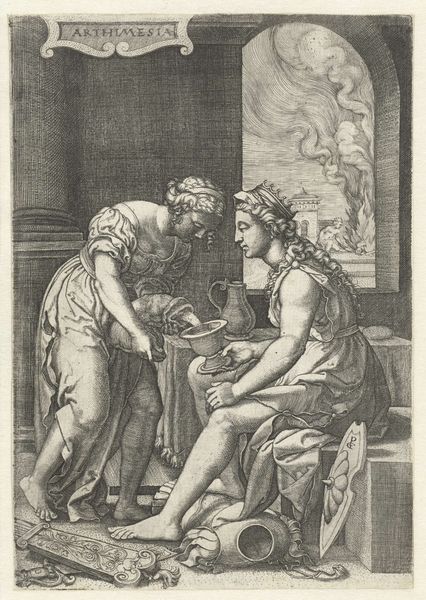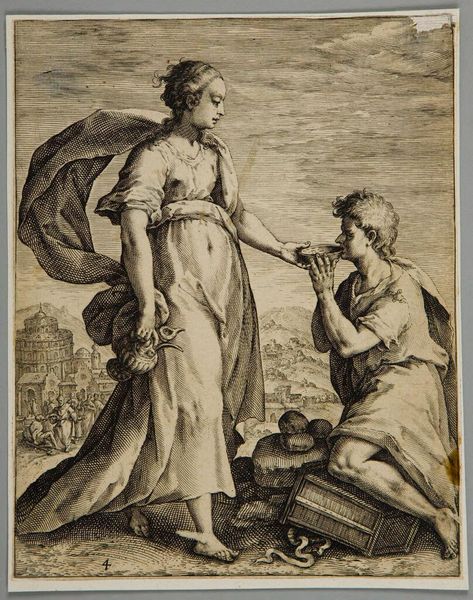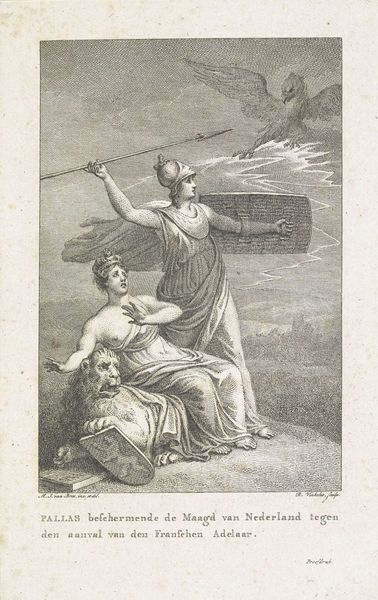
drawing, pencil
#
drawing
#
neoclacissism
#
allegory
#
figuration
#
coloured pencil
#
pencil
#
history-painting
#
academic-art
Copyright: Public Domain: Artvee
Editor: Here we have "Euterpe et Polymnie," a drawing from 1800 by Pierre-Paul Prud'hon. It looks like it's made of pencil and maybe some colored pencil? It feels very… classical, of course, and quite serene. What do you see in this piece, considering the balance of the composition and the textures? Curator: The equilibrium in Prud'hon's composition, a cornerstone of Neoclassical aesthetics, warrants attention. Observe how the verticality of Polymnie, counterposed to the seated Euterpe, establishes a visual cadence. Consider how the varying pencil strokes—from the delicate hatching defining the drapery to the bolder lines accentuating contours—sculpt form and contribute to the drawing's formal coherence. Editor: That makes sense. I'm interested in how the shading is used, actually. It almost looks like a statue or relief. Was that intentional, do you think? Curator: Indeed. Prud'hon’s strategic employment of chiaroscuro, the interplay of light and shadow, evokes a sculptural quality, transforming the figures into three-dimensional forms inhabiting a tangible space. What purpose might this "sculptural quality" serve in a drawing? Consider the philosophical underpinnings of Neoclassicism and its fascination with ideal forms. Editor: Maybe to give it a timeless quality? Because statues are very permanent, and they give importance to the subjects they depict. Curator: Precisely. By referencing sculpture, Prud’hon invests his figures with an aura of permanence and elevates them beyond mere representations. Notice how the composition and modeling reflect the intellectual framework that informs the artwork, and how that philosophical stance impacts how we interpret and value the image. Editor: This has really helped me to think more analytically about the construction of an image. Curator: And in seeing how form and philosophy can intersect. A rewarding conclusion.
Comments
No comments
Be the first to comment and join the conversation on the ultimate creative platform.


